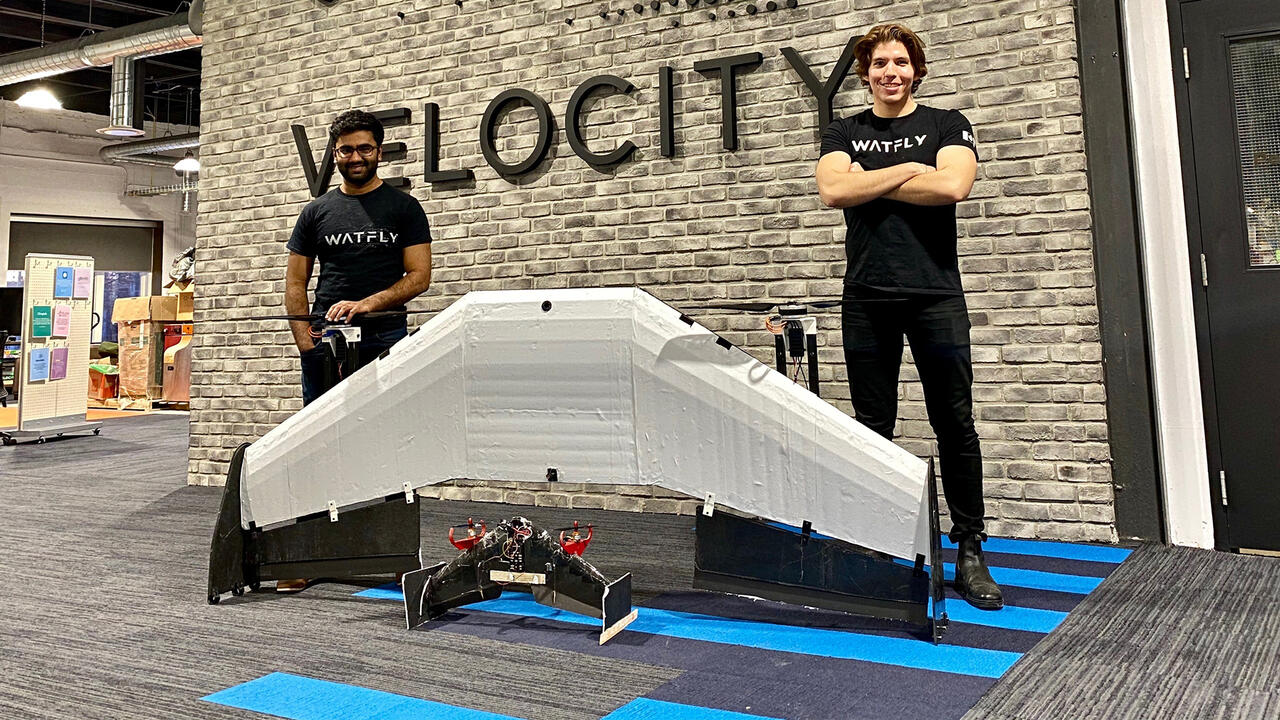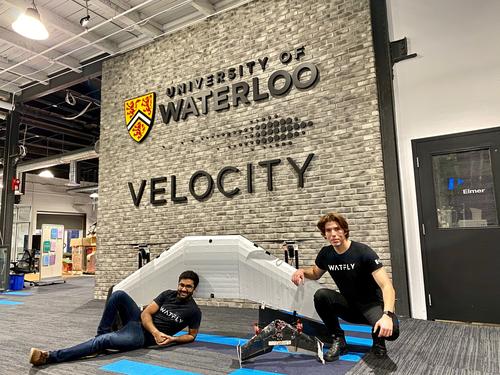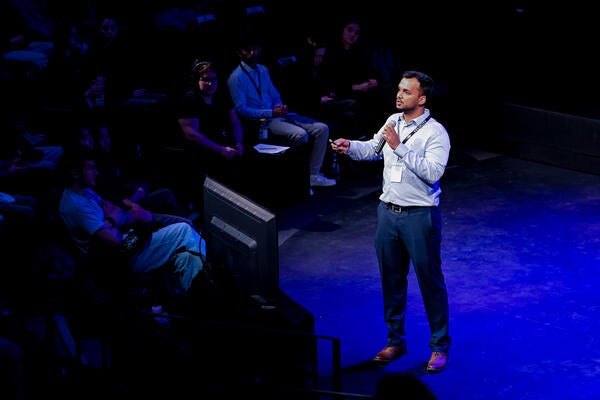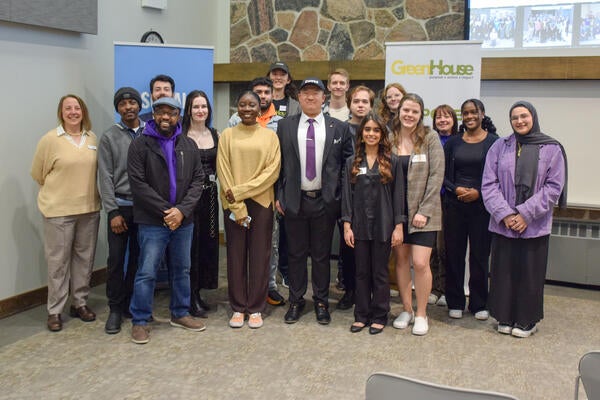
Cleared for takeoff
Waterloo startup Watfly wins Velocity funding to design the future of personal transportation.

Waterloo startup Watfly wins Velocity funding to design the future of personal transportation.
By Claire Mastrangelo Office of AdvancementThe flying car might be closer than we think.
In a warehouse down the road from Waterloo’s main campus, Abi Chandrasekhar (BASc in progress) and Gonzalo Espinoza Graham (BASc ’19) are building a prototype of a single-passenger aircraft. In it, they see the potential to revolutionize urban transportation.
The idea took root in Abi’s mind when he was in his first year of mechanical engineering. Like many of his peers, he’d seen the movie Iron Man and marveled at the hero’s rocket-powered suit of armour. Abi wondered, “Is it possible to build that suit today?”
He started doing research and calculations, and he found out that jet engines actually could transport a person by air — but they would be too noisy, and too much work to maintain.
Still, Abi was curious, so he continued his research over the next two years. He discovered that electric propulsion had advanced to the point where it could power a solo vehicle. He tapped his classmate Gonzalo on the shoulder to help him research the companies that were developing these new technologies. Their conclusion?
Abi says, “We thought we could do it better.”
So, in fourth year the friends formed a student design team to develop their own version of a flying car. Even then, the two friends knew this was more than an extracurricular project.
“Our goal was always to treat this as a business,” says Abi. “It was an easy decision: who doesn't want personal air travel from their garage?”
The pair now work on Watfly full time out of the Velocity Garage, where they focus on building their technology and finding ways get future users on board. Given that the average car in the U.S. carries less than two people, Abi and Gonzalo see individual air travel as a way to reduce gridlock on the roads, helping companies regain lost productivity and giving commuters back a portion of their day.
To help travelers transition from the road to the air, Abi and Gonzalo are making their vehicles autonomous. It removes the need for pilots and special licenses — and autonomy, they say, is almost ready to ride.
“Most people within the air travel sector believe that autonomy in the air will beat out autonomy on the roads,” says Abi. “You don't have to deal with pedestrians, traffic lights or lane markings that disappear. The basic technology already exists, so it’s mostly a solved problem.”

Abi (left) and Gonzalo pose with their two prototypes.
To create a system that introduces users to the aircraft, Abi and Gonzalo plan to release their vehicles through a new commuter service. They’re aiming to build a network of stations where passengers can take off and land Watfly aircraft. Because the vehicles have a small footprint, the company could make use of more than 5,000 helipads that already exist in North America.
“The response to our plan has been very enthusiastic, but we get a lot of questions as well,” says Gonzalo. “Our approach has been to put our heads down and build it so people see it, because we know it's possible.”
Gonzalo Espinoza Graham, Alumnus
We knew our plan made sense, but we didn’t know how to do it with no money. Velocity gave us a way.
Crystallizing their vision has taken some time. The friends spent almost a year and a half working with Velocity to hone their business idea, losing several pitch competitions along the way. Then they hit their stride, winning the Velocity Fund Finals $5K last summer and taking home another $50,000 from the Velocity Fund Pitch Competition in the fall.
“That was when I said, ‘Okay, we can actually do this,’ ” says Gonzalo. “We knew our plan made sense, but we didn’t know how to do it with no money. Velocity gave us a way.”
Flight-testing should begin by the end of 2021. As Abi and Gonzalo develop their prototype, they’re also working steadily to grow to their business.
“We don't try to convince everyone to join us,” Gonzalo says. “We find others who share our vision, because there are people out there who see it right away.”

Read more
Velocity Pitch Competition winner Grease Tech brings industrial machinery maintenance into the 21st century

Read more

Read more
GreenHouse awards more than $14,000 to five student founded ventures making an impact towards several UN Sustainable Development Goals
The University of Waterloo acknowledges that much of our work takes place on the traditional territory of the Neutral, Anishinaabeg and Haudenosaunee peoples. Our main campus is situated on the Haldimand Tract, the land granted to the Six Nations that includes six miles on each side of the Grand River. Our active work toward reconciliation takes place across our campuses through research, learning, teaching, and community building, and is co-ordinated within the Office of Indigenous Relations.